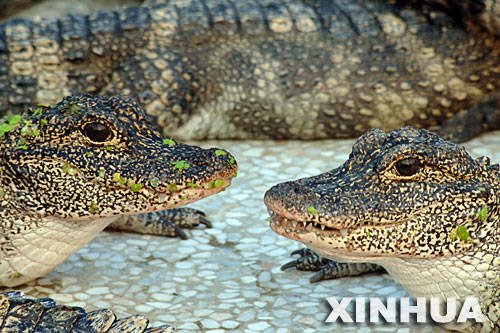Top 10 most endangered animals in China
- By Yang Xi
 0 Comment(s)
0 Comment(s) Print
Print E-mail China.org.cn, February 8, 2012
E-mail China.org.cn, February 8, 2012

The Chinese Alligator, also known as the Yangtze Alligator, was very abundant more than 230 million years ago, particularly on the eastern seaboard. But now, with a population of about 150 in the wild, it is listed as the world's most endangered creatures.
Status:
China has put the Chinese Alligator at the top level of its protection list. In 1979, the Chinese Alligator Breeding Research Center was set up in Anhui. Since then, the number of alligators at the center has risen from about 200 to more than 10,000.
Geographic Distribution:
Chinese alligators are distributed in the lower reaches of the Yangtze River in the southern part of Anhui Province and in some parts of Zhejiang and Jiangsu provinces.
You may not know:
Chinese Alligators are good at swimming and inhabits in the water. They build their lairs in the thick grass of lakes and shallows. They usually stay in their lairs in winter and lay eggs in July and August.
Chinese Alligators are nocturnal. They often eat molluscs and fish, but are known to catch birds and mammals upon occasion. Due to the almost entire loss of low-altitude wetlands in the Yangtze River Basin, wild Chinese Alligator is almost extinct. In the past 30 years, there have been remarkable successes in the artificial breeding of Chinese Alligators. Thousands of stable-bred Chinese Alligators have laid the foundation for projects to reintroduce the specie back to the nature and recover the natural population.








Go to Forum >>0 Comment(s)